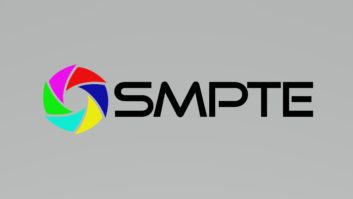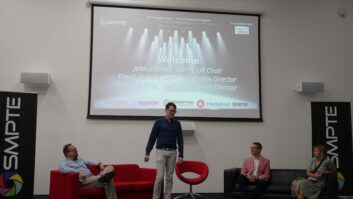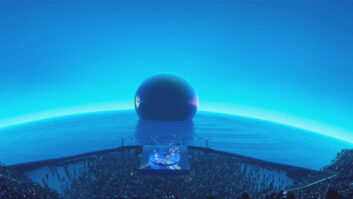Digital has redefined the possibilities in advancing the movie-going experience and continuing the long tradition of cinema in providing a spectacle that is simply unmatched anywhere else. In this age where technology advances break new ground, and the business challenge is to keep up; are we now entering a disruptive phase of cinema history?
35mm film is not the only cinema technology in use today to have well surpassed its centennial. Arc lamps, its origins in the early 1800’s, are still the most common light source in projectors; while 3D can trace its roots to the 1830’s. Now, as was then, technology advances and the work of pioneers are pushing the boundaries of both image capture and reproduction in the cinema.
There is a strong focus on the disruption of cinema in the ‘Big Screen Experience’ stream here at IBC2014. Looking at the number of areas that will are covered, such as second screen, live events, cloud production and immersive audio, it is clear that the industry is experiencing the biggest period of change in its history. So what will become of the technologies that are now nearly 200 years old?
Projector light sources have long been an area of advancement in cinema. Early projectors using incandescent and limelight, were quickly superseded by the arc lamp. While this technology has advanced from carbon rods to the xenon and high-pressure sodium lamps of today, the principle has not changed much – an electric arc producing a wide spectrum light source.
Arc lamps in cinema do have shortcomings such as energy efficiency that limits practical brightness and achievable colour reproduction and contrast ratio. Laser projection may be the answer to these issues, and this technology is now finding its way from the lab to the cinema.
With consumer focus on more pixels in the shape of 4K projection and Ultra High Definition Television (UHD-TV), the professional side of the industry has been pushing to complement this with ‘better’ pixels. The new breed of cinema laser projection delivers image improvements such as wider colour gamut and increased dynamic range both of which compliment higher resolution.
Peter Ludé, founding chair of the Laser Illuminated Projector Association (LIPA) and Immediate Past President and Fellow of the Society of Motion Picture and Television Engineers (SMPTE), is helming the IBC2014 sessions looking at this topic. Ludé’s panels look at subjects such as the commercial rollout, safety and regulations and the finer technical details of colour reproduction, the human visual system and the laser specific challenge of ‘speckle.’
There’s a chance to see the very latest in laser projection technology with a demonstration of Christie’s 6 primary 4K-resolution laser projectors in the main auditorium in the RAI. Another SMPTE Fellow and also a SMPTE Standards director, Howard Lukk,is investigating another hot button in cinema at IBC2014, how to improve 3D. Lukk’s session covering Tri-focal Camera Systems looks at how this revolutionary new technique creates ‘hybrid’ 3D, allowing creatives to shoot action as they typically have for 2D movies — while allowing freedom and flexibility of manipulating the 3D depth in postproduction similar to the techniques available in 3D animation.
All areas of media 3D has waxed and waned in popularity over the 100 years it has been used in motion picture. Many of the issues that have dogged 3D are due to the comfort of the viewing experience for the audience. As we understand more about the science of human vision, techniques such as tri-focal allow simplicity for production and also the ability to create 3D in a way that is pleasing and comfortable for the viewer.
Of course, technology only becomes a useful cinematic tool when applied to the art, and IBC2014 delegates are among the first to enjoy the short film Make Believe, shot in Berlin using the tri-focal system that was co-developed by Walt Disney Studios, Fraunhofer HHI and ARRI. Looking further forward, other topics such as cloud technology will start to become even more influential.
Movie Making in the Matrix will look at how virtualisation of resources is affecting production and post in the film and television industry. Productions from both the Hollywood and the independent end of the spectrum have made use of these technologies. However, questions still remain about how elements such as security, bandwidth and choice of service might limit the current applications.
It is clear that internet technology is now becoming ubiquitous in application across all areas of media, and it is not only cinema being disrupted by these advances. In May of 2015, SMPTE will be holding its Forum in Berlin, produced in collaboration with FKTG.
The conference will focus on how the convergence of connectivity, bandwidth, and media technology improvements will impact production and distribution of media across all platforms from cinema and broadcast, to mobile and interactive technologies. The Berlin event will look at the related opportunities and challenges from a European perspective, held over two days at Fraunhofer Institute for Open Communication Systems (FOKUS).
Aiming to provide fresh perspectives to help engineers, creatives, and researchers understand the technical trends that drive the future of media over the internet.






